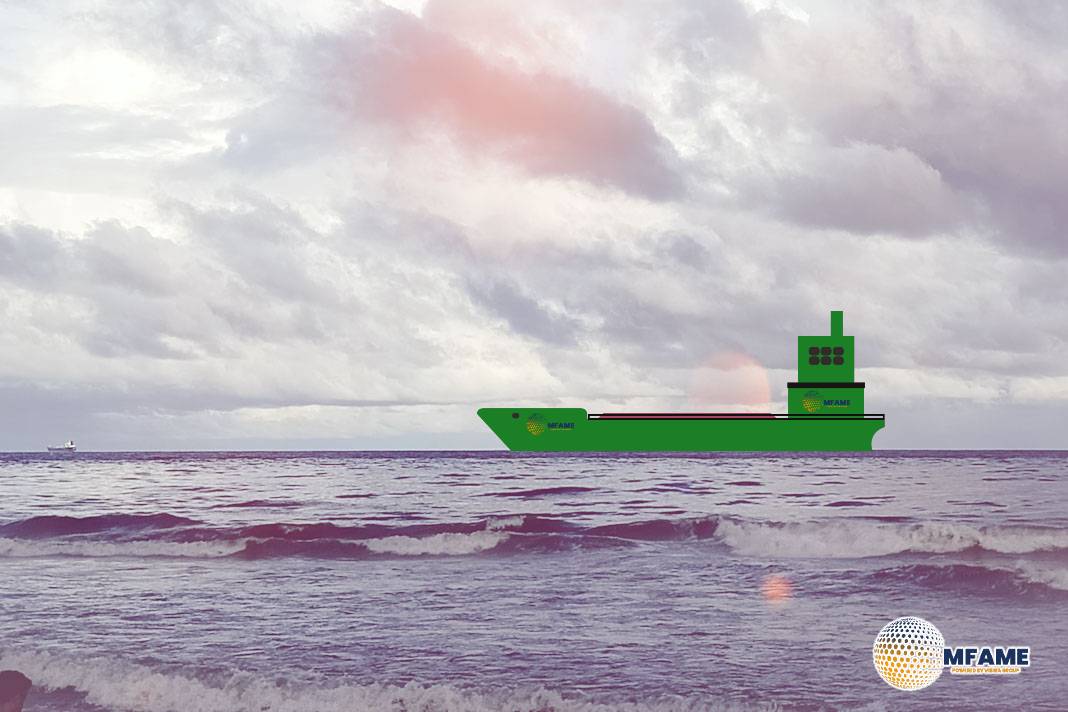ClassNK has just released the latest version of its comprehensive report, “ClassNK Alternative Fuels Insight (Version 3.0)”. This updated publication provides crucial new information, particularly regarding cost simulations that now factor in the IMO’s mid-term greenhouse gas (GHG) reduction measures, which were officially approved at the 83rd session of the Marine Environment Protection Committee (MEPC 83) held in April 2025.
Evolving Trends
The landscape of alternative marine fuels continues to evolve, with LNG-fueled ships expected to remain the most popular choice in the near term. While their proportion in the orderbook saw a slight dip from 64% in December 2023 to 57% in June 2024, it rebounded to maintain a 58% share by the end of December 2024. In comparison, methanol-fueled ships held a 25% share of the orderbook during the same period.
The adoption rate of alternative fuel ships varies significantly across different vessel types:
- High Adoption: Vehicle carriers, LPG carriers, and containerships are demonstrating a high adoption rate for alternative fuels.
- Limited Progress: For ship types such as bulk carriers, product/chemical tankers, and crude oil tankers, the transition to alternative fuels has not yet progressed significantly.
Looking ahead, ammonia-fueled ships are anticipated to see increased demand. A notable number of ammonia fuel adoptions are already being observed not only in ammonia carriers but also in bulk carriers. This trend highlights the importance of closely monitoring whether ammonia fuel will emerge as a viable and scalable solution for the decarbonization of the shipping industry.
While ammonia offers the potential for zero-carbon emissions at the point of combustion (as it contains no carbon), several challenges need to be addressed for its widespread adoption:
- Safety Concerns: Ammonia is highly toxic and corrosive. Strict safety measures, including robust ventilation systems, leak detection, and emergency shutdown protocols, are crucial for safe handling and storage on board. The IMO has issued interim guidelines for the safety of ships using ammonia as fuel, which are expected to be finalized, marking a significant step in regulatory support.
- Energy Density: Ammonia has a lower volumetric energy density compared to conventional fuels, meaning larger storage tanks will be required, potentially impacting cargo capacity.
- Emissions Beyond CO2: While carbon-free, ammonia combustion can produce nitrous oxides (NOx) and N2O (a potent greenhouse gas). Technologies for NOx reduction and N2O elimination are being developed and are critical for ammonia to be a truly “green” fuel.
Complex Transition
The shipping industry’s journey towards decarbonization involves a complex transition to alternative fuels, each with its own set of considerations and challenges.
Zero-Emission and Carbon-Neutral Potential: Every alternative fuel currently being considered for international shipping has the potential to be either zero-emission or carbon-neutral, though their lifecycle greenhouse gas (GHG) emissions vary significantly. This means that while some fuels might have low or zero emissions during combustion (tank-to-wake), their overall environmental impact must be assessed “well-to-wake,” accounting for emissions from feedstock extraction, production, transport, and bunkering. It is crucial for stakeholders to fully understand the scope of GHG emissions targeted by regulations and to weigh the pros and cons of each fuel under these regulatory frameworks.
Impact on Ship Design and Operations: A key consideration for alternative fuels is their calorific value. Due to lower energy density compared to conventional fuel oil, alternative fuels necessitate larger fuel tank capacities. This can potentially reduce the distance a ship can cover with the same fuel tank size or impact cargo capacity. Therefore, a comprehensive, fleet-wide assessment, including planned routes and operational requirements, is essential when adopting alternative fuel ships. This means that ship design will need to adapt to accommodate the increased fuel storage volume, potentially affecting hull forms and internal layouts.
Cost and Supply Challenges: The cost of zero-emission or carbon-neutral fuels is generally perceived to be lower for biomass-derived fuels (e.g., biodiesel) than for green hydrogen-derived fuels (e.g., green ammonia, green methanol). However, biomass-derived fuels face significant supply constraints, demanding careful attention to their availability and scalability.
Did you subscribe to our daily Newsletter?
It’s Free Click here to Subscribe!
Source: Safety4sea

















